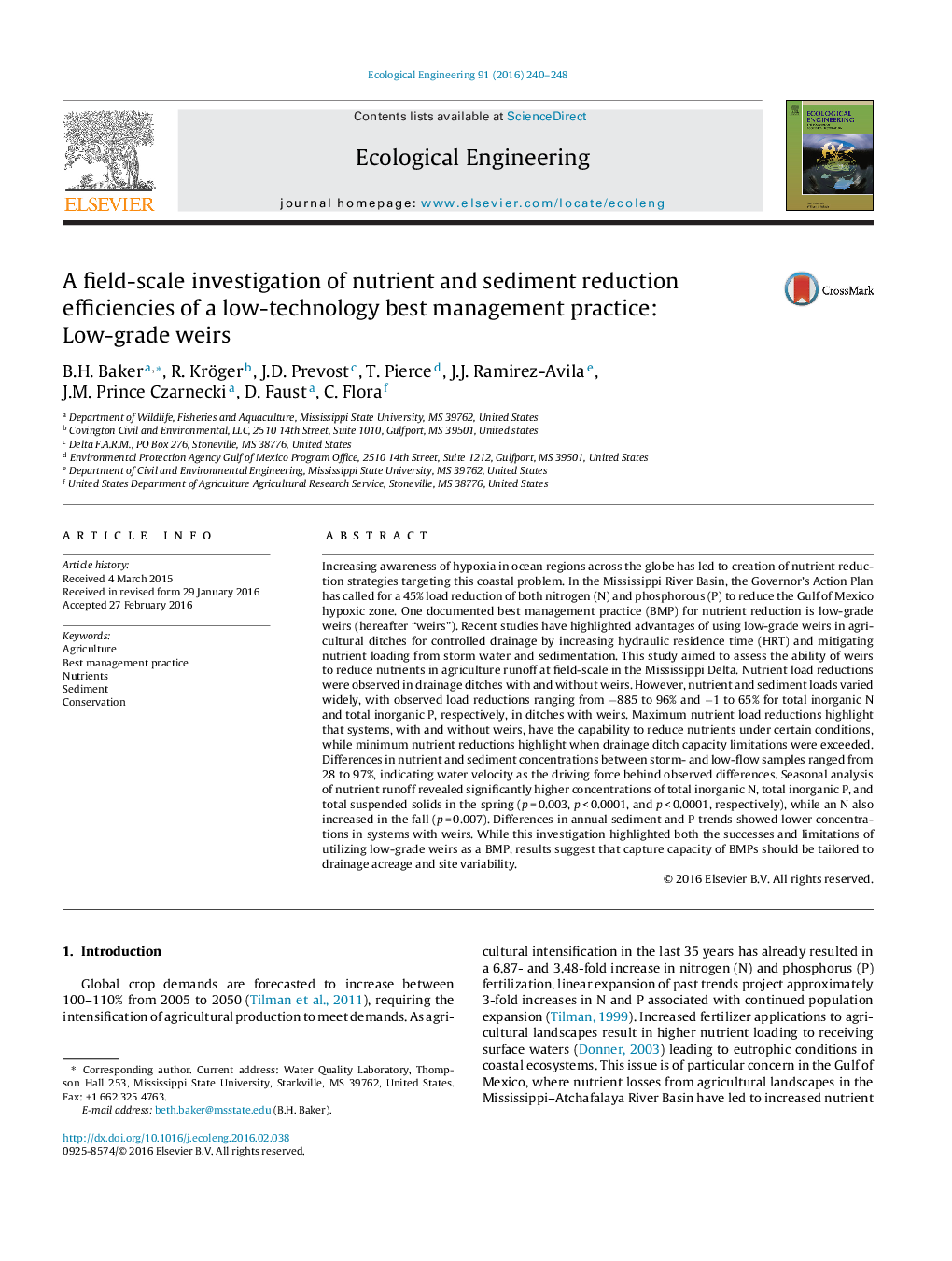| کد مقاله | کد نشریه | سال انتشار | مقاله انگلیسی | نسخه تمام متن |
|---|---|---|---|---|
| 6301319 | 1618008 | 2016 | 9 صفحه PDF | دانلود رایگان |
عنوان انگلیسی مقاله ISI
A field-scale investigation of nutrient and sediment reduction efficiencies of a low-technology best management practice: Low-grade weirs
ترجمه فارسی عنوان
یک تحقیق در مقیاس کوچک از اثرات راندمان مواد مغذی و کاهش رسوبات از بهترین تکنیک های مدیریتی با تکنولوژی پایین: غوطه وری کم درجه
دانلود مقاله + سفارش ترجمه
دانلود مقاله ISI انگلیسی
رایگان برای ایرانیان
کلمات کلیدی
کشاورزی، بهترین مدرک مدیریت، مواد مغذی رسوب، حفاظت،
موضوعات مرتبط
علوم زیستی و بیوفناوری
علوم کشاورزی و بیولوژیک
بوم شناسی، تکامل، رفتار و سامانه شناسی
چکیده انگلیسی
Increasing awareness of hypoxia in ocean regions across the globe has led to creation of nutrient reduction strategies targeting this coastal problem. In the Mississippi River Basin, the Governor's Action Plan has called for a 45% load reduction of both nitrogen (N) and phosphorous (P) to reduce the Gulf of Mexico hypoxic zone. One documented best management practice (BMP) for nutrient reduction is low-grade weirs (hereafter “weirs”). Recent studies have highlighted advantages of using low-grade weirs in agricultural ditches for controlled drainage by increasing hydraulic residence time (HRT) and mitigating nutrient loading from storm water and sedimentation. This study aimed to assess the ability of weirs to reduce nutrients in agriculture runoff at field-scale in the Mississippi Delta. Nutrient load reductions were observed in drainage ditches with and without weirs. However, nutrient and sediment loads varied widely, with observed load reductions ranging from â885 to 96% and â1 to 65% for total inorganic N and total inorganic P, respectively, in ditches with weirs. Maximum nutrient load reductions highlight that systems, with and without weirs, have the capability to reduce nutrients under certain conditions, while minimum nutrient reductions highlight when drainage ditch capacity limitations were exceeded. Differences in nutrient and sediment concentrations between storm- and low-flow samples ranged from 28 to 97%, indicating water velocity as the driving force behind observed differences. Seasonal analysis of nutrient runoff revealed significantly higher concentrations of total inorganic N, total inorganic P, and total suspended solids in the spring (p = 0.003, p < 0.0001, and p < 0.0001, respectively), while an N also increased in the fall (p = 0.007). Differences in annual sediment and P trends showed lower concentrations in systems with weirs. While this investigation highlighted both the successes and limitations of utilizing low-grade weirs as a BMP, results suggest that capture capacity of BMPs should be tailored to drainage acreage and site variability.
ناشر
Database: Elsevier - ScienceDirect (ساینس دایرکت)
Journal: Ecological Engineering - Volume 91, June 2016, Pages 240-248
Journal: Ecological Engineering - Volume 91, June 2016, Pages 240-248
نویسندگان
B.H. Baker, R. Kröger, J.D. Prevost, T. Pierce, J.J. Ramirez-Avila, J.M. Prince Czarnecki, D. Faust, C. Flora,
